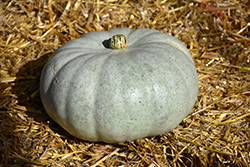Fri & Sat 8am - 8pm
Sun 8am - 7pm
Anytown, USA 12345
fax: 261.787.0463
e-mail: info@successgc.com


Plant Finder

Height: 24 inches
Spacing: 3 feet
Sunlight:
![]()
Hardiness Zone: (annual)
Description:
An Australian pumpkin that produces flattened, round fruit averaging 10-15lbs a piece; pale blue skinned with silver-white stripes and speckles; firm, dark orange flesh is sweet and nutty, perfect for both sweet and savory dishes
Edible Qualities
Silver Moon Pumpkin is an annual vegetable plant that is typically grown for its edible qualities. It produces gigantic powder blue round fruit with silver variegation and orange flesh which are usually ready for picking from late summer to mid fall. The fruits have a sweet taste and a firm texture.
The fruit are most often used in the following ways:
- Cooking
- Baking
Planting & Growing
Silver Moon Pumpkin will grow to be about 24 inches tall at maturity, with a spread of 8 feet. When planted in rows, individual plants should be spaced approximately 3 feet apart. This vegetable plant is an annual, which means that it will grow for one season in your garden and then die after producing a crop.
This plant is typically grown in a designated vegetable garden. It should only be grown in full sunlight. It does best in average to evenly moist conditions, but will not tolerate standing water. This plant is a heavy feeder that requires frequent fertilizing throughout the growing season to perform at its best. It is not particular as to soil pH, but grows best in rich soils. It is somewhat tolerant of urban pollution. Consider applying a thick mulch around the root zone over the growing season to conserve soil moisture. This is a selection of a native North American species.; however, as a cultivated variety, be aware that it may be subject to certain restrictions or prohibitions on propagation.
